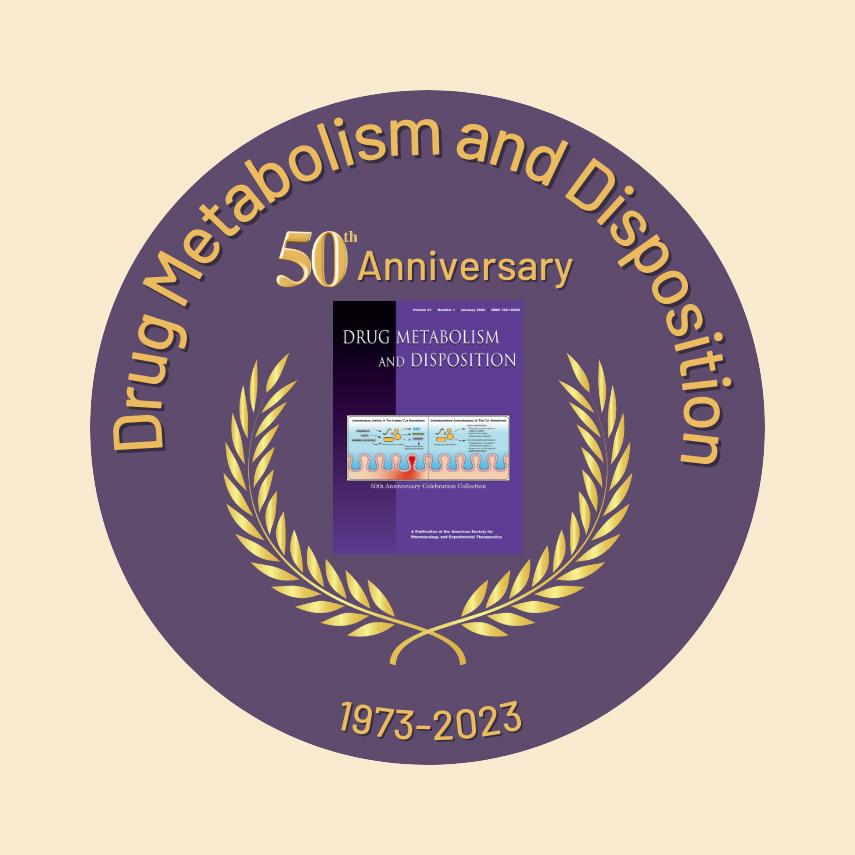Written by Simone Brixius-Anderko, PhD and Hannah Work
In 2023, ASPET’s journal Drug Metabolism and Disposition (DMD) celebrated its 50th Anniversary! First published in 1973, the journal has been the home for drug metabolism researchers and their exciting findings while also keeping an eye on new, emerging techniques and scientific questions.
To celebrate this milestone, DMD published special sections throughout 2023 that showcased past and future research in the drug metabolism and disposition field. The anniversary issues linked the history and discovery of metabolic enzymes, transporters and receptors to recent progressions in the field regarding emerging techniques and technologies.
In the first of a two-part series, key articles are highlighted from each anniversary issue. The Pharmacologist will continue with these highlights in the May 2024 issue and conclude by attempting to predict the future of the drug metabolism field and its connection to the journal.
January Anniversary Issue
The Power of Mentorship and a Look into the Future
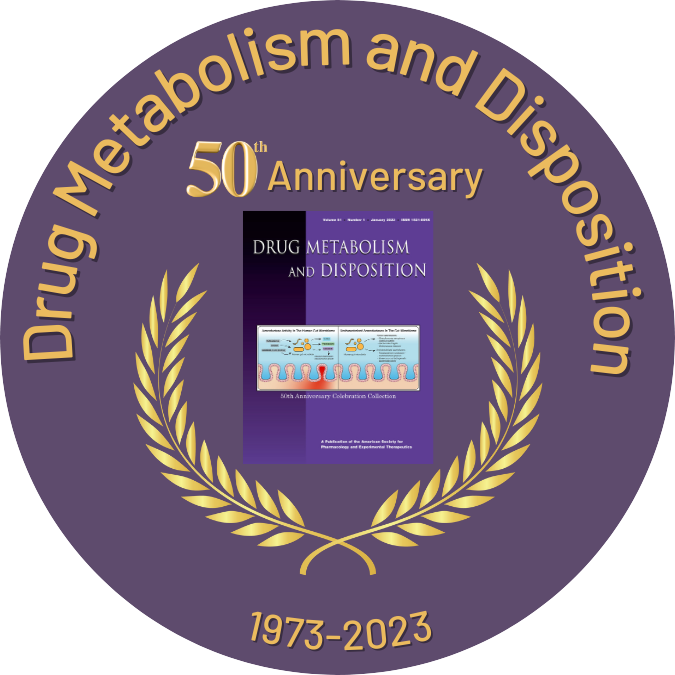 The January issue featured the editorial piece “Celebrating 50 Years of Excellence in DMD Science” by editor-in-chief Dr. Xinxin Ding, that highlighted DMD’s origins. This issue also showcased the contributions of past editors to the growth and success of the journal, in the article “The Evolution of Drug Metabolism and Disposition: A Perspective From the Editors.”
The January issue featured the editorial piece “Celebrating 50 Years of Excellence in DMD Science” by editor-in-chief Dr. Xinxin Ding, that highlighted DMD’s origins. This issue also showcased the contributions of past editors to the growth and success of the journal, in the article “The Evolution of Drug Metabolism and Disposition: A Perspective From the Editors.”
The article by Dr. James Halpert titled “Four Decades of Cytochrome P450 2B Research: From Protein Adducts to Protein Structures and Beyond” emphasized the power of mentorship in inspiring successful careers in the drug metabolism and disposition field.
Dr. Fred Guengerich voiced concerns about the future of the drug metabolism and disposition field in his piece “Drug Metabolism: A Half-Century Plus of Progress, Continued Needs, and New Opportunities.” He described past achievements in the field that underwent an evolution, to the rise of functional and structural studies that accelerated our understanding of drug metabolism.
February
It’s Xenobiotic Receptor Appreciation Month!
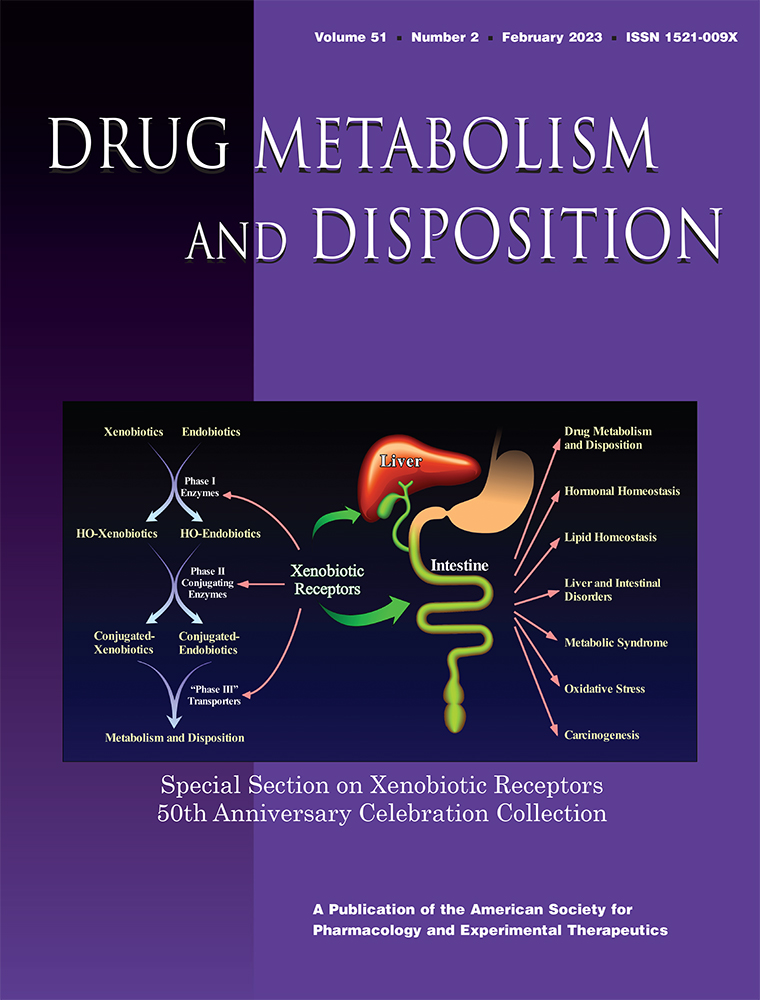


Dr. Wen Xie provided an historic overview of the field in his contribution “Xenobiotic Receptors, a Journey of Rewards.” He described the discovery and characterization of PXR in the early 2000s and how he built a successful career pursuing PXR research.
Dr. Hongbing Wang described the unusual interaction of CAR with the anti-epileptic drug phenobarbital in “Phenobarbital in Nuclear Receptor Activation: An Update.”
Dr. Taosheng Chen’s article, “Regulation of Nuclear Receptors PXR and CAR by Small Molecules and Signal Crosstalk: Roles in Drug Metabolism and Beyond” discussed how their biologic activities should be integrated into drug development platforms and how efforts should be made to exploit XRs as drug targets and further elucidate their interactions with agonists and antagonists.
The activation of XRs by microbial metabolites and the subsequent impact on the gastrointestinal immune balance is described in the contribution of Dr. Sridhar Mani’s laboratory, “Microbial Metabolites as Ligands to Xenobiotic Receptors: Chemical Mimicry as Potential Drugs of the Future.”
How diet influences receptor activation is discussed in Dr. Jinhan He’s review article, “The Function of Xenobiotic Receptors in Metabolic Diseases,” which elaborates on the role of XRs in nutrient metabolism and metabolic disease.
March
On the Interface of Drug Metabolism and Precision Medicine
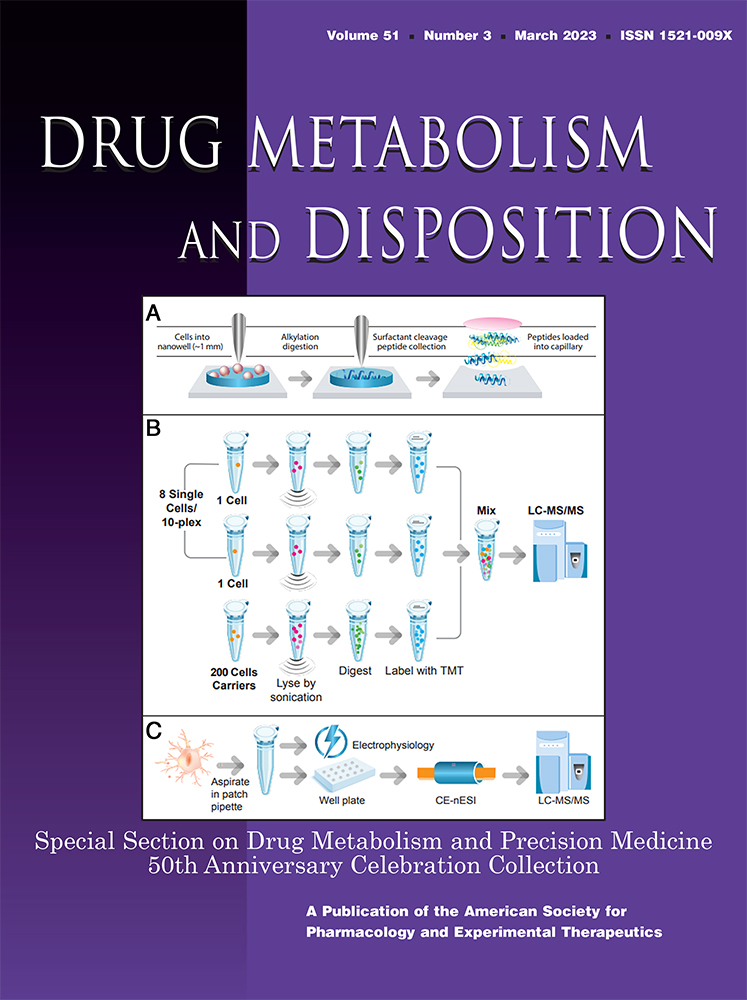


The Bumpus Lab highlighted the importance of single cell analyses in drug metabolizing tissue in their article, “Achieving a Deeper Understanding of Drug Metabolism and Responses Using Single-Cell Technologies.”
A review article from the laboratory of Dr. Elaine To touched on the metabolism and efficacy of anti-viral drugs, in “Cell and Tissue Specific Metabolism of Nucleoside and Nucleotide Drugs: Case Studies and Implications for Precision Medicine.”
Dr. Herana Kamal Seneviratne examined the fate of the HIV drug Tenofovir and its dephosphorylation in “Nucleoside Triphosphate Diphosphohydrolase 1 Exhibits Enzymatic Activity toward Tenofovir Diphosphate.”
In “Multidisciplinary Insights into the Structure-Function Relationship of the CYP2B6 Active Site” Dr. Philip Cox expressed his concern about the gap in understanding about how specific active site residues contribute to the metabolism of specific drugs.
April
An Homage to Dr. F. Peter Guengerich
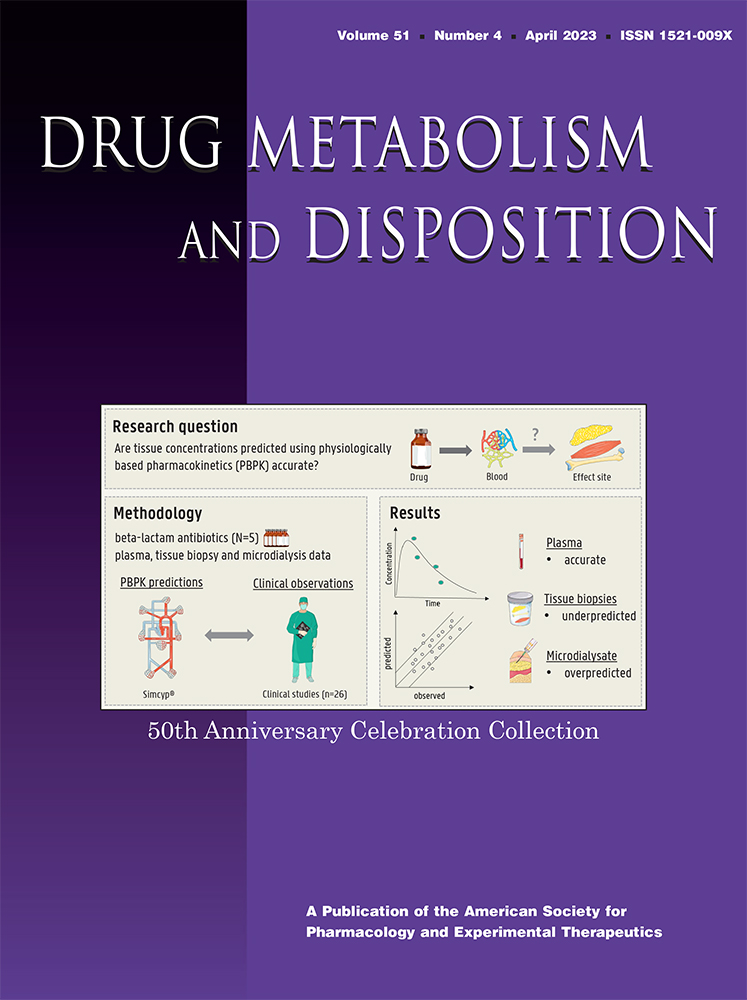


June
Special Section on Perspectives on Drug Metabolism and Disposition, Part I
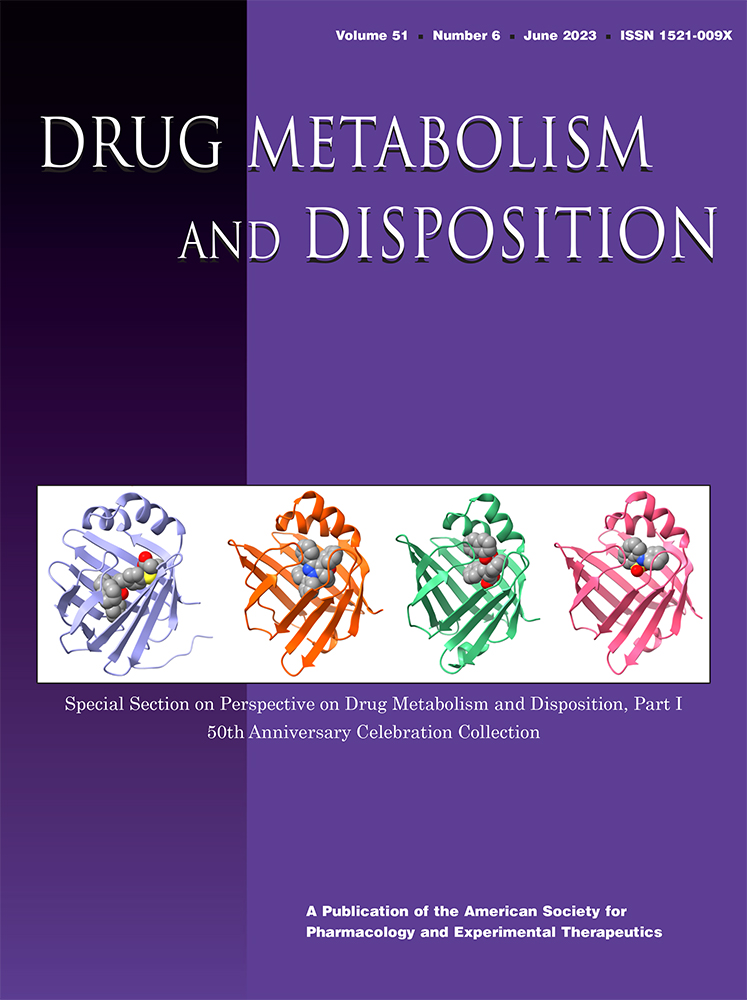


A review article by Dr. Scott Obach examined the 60-year history of ADME, in “Human Absorption, Distribution, Metabolism, and Excretion Studies: Origins, Innovations, and Importance.”
While PXR and CAR are significant protagonists on the drug metabolism and disposition stage, Dr. David Riddick envisions the co-evolution of Aryl Hydrocarbon Receptor research in his article “Fifty Years of Aryl Hydrocarbon Receptor Research as Reflected in the Pages of Drug Metabolism and Disposition.”
Dr. Xiao-bo Zhong provided a comprehensive review, “Epigenetic Mechanisms Contribute to Intraindividual Variations of Drug Metabolism Mediated by Cytochrome P450 Enzymes” examining how epigenetic factors affect CYP-mediated drug metabolism and drug-drug interactions.
Aiming Yu and colleagues summarized the advances in recombinant techniques in the review article “Recombinant Technologies Facilitate Drug Metabolism, Pharmacokinetics, and General Biomedical Research.” The authors also discuss the latest RNA technologies and the use of bioengineered RNA to elucidate ADME gene regulation.
In a review article contributed by Dr. Nina Isoherranen, we learned about intracellular lipid binding proteins in “Impact of Intracellular Lipid Binding Proteins on Endogenous and Xenobiotic Ligand Metabolism and Disposition.”
Part two of this review of the DMD Anniversary collection will continue in the May 2024 issue of The Pharmacologist.
Authors
-


Simone Brixius-Anderko, PhD, is an Assistant Professor at the University of Pittsburgh School of Pharmacy. She currently serves as the Communications Officer for the ASPET Division for Drug Metabolism and Disposition.
View all posts -


Hannah Work is a PhD candidate at the University of Colorado Anschutz Medical Campus, where she is also a graduate student researcher. She currently serves as a Junior Communications Officer for the ASPET Division for Drug Metabolism and Disposition.
View all posts

